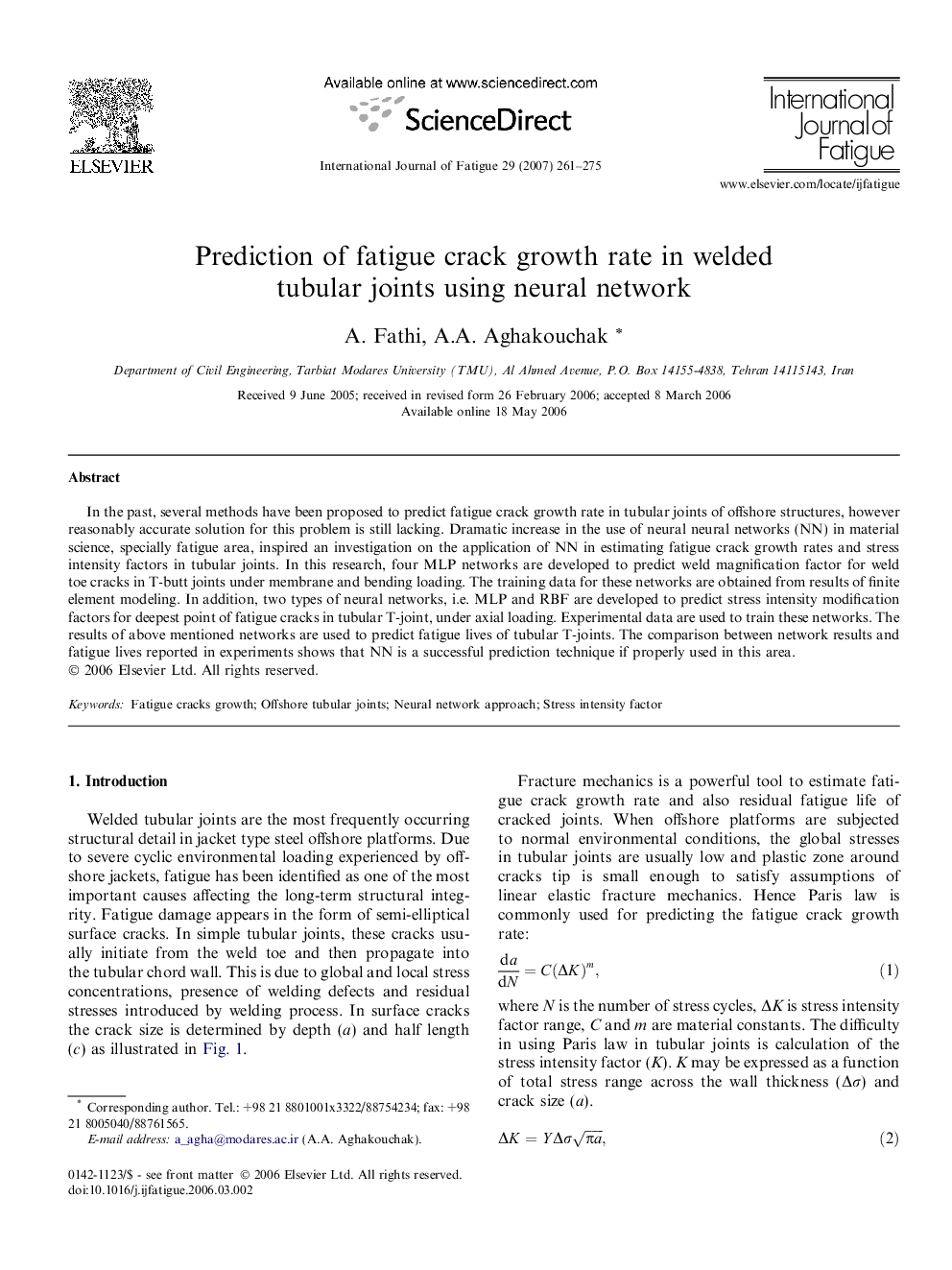| Article ID | Journal | Published Year | Pages | File Type |
|---|---|---|---|---|
| 778604 | International Journal of Fatigue | 2007 | 15 Pages |
In the past, several methods have been proposed to predict fatigue crack growth rate in tubular joints of offshore structures, however reasonably accurate solution for this problem is still lacking. Dramatic increase in the use of neural neural networks (NN) in material science, specially fatigue area, inspired an investigation on the application of NN in estimating fatigue crack growth rates and stress intensity factors in tubular joints. In this research, four MLP networks are developed to predict weld magnification factor for weld toe cracks in T-butt joints under membrane and bending loading. The training data for these networks are obtained from results of finite element modeling. In addition, two types of neural networks, i.e. MLP and RBF are developed to predict stress intensity modification factors for deepest point of fatigue cracks in tubular T-joint, under axial loading. Experimental data are used to train these networks. The results of above mentioned networks are used to predict fatigue lives of tubular T-joints. The comparison between network results and fatigue lives reported in experiments shows that NN is a successful prediction technique if properly used in this area.
